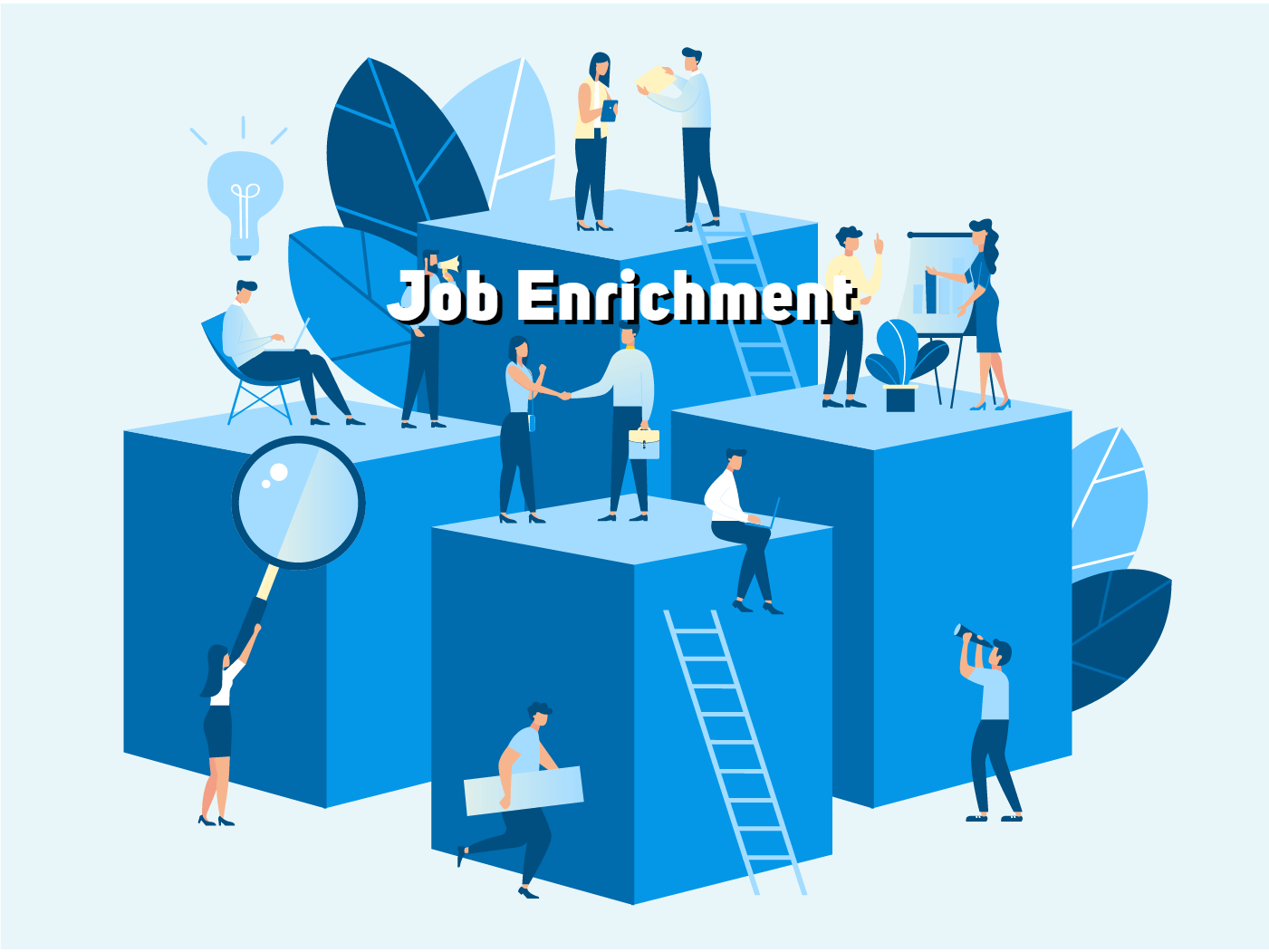Job enrichment refers to the qualitative enhancement of a job by expanding its content, complexity, and the employee’s scope of responsibility. It involves the vertical extension of work tasks—meaning that employees take on duties that were previously assigned to higher hierarchical levels, such as planning or control functions. This is a key concept in modern work design and organizational development.
According to Olfert, job enrichment is a process in which new, higher-value tasks are added to an existing role, increasing employee flexibility and often requiring or encouraging higher qualifications. This method contrasts with job enlargement, which only broadens a job horizontally without increasing complexity.
Benefits and Challenges of Job Enrichment
Benefits:
-
Reduced monotony through more varied, engaging work
-
Increased job satisfaction and motivation
-
Development opportunities through the acquisition of new skills
-
Greater potential for self-realization and improved job performance
Challenges:
-
Risk of employee overload due to increased demands
-
May require intensive training and support
-
If not carefully managed, can lead to frustration or dissatisfaction
Semi-Autonomous Work Groups
A related concept is that of semi-autonomous work groups—small teams working independently on self-contained tasks. These groups operate with varying degrees of autonomy, and are a practical implementation of job enrichment at the team level.
Benefits include:
-
Enhanced social competence, flexibility, and qualification development
-
Decreased one-sided stress and improved motivation
-
Strengthened ownership and collaboration
However, issues such as excessive self-regulation, internal conflict, or compensation imbalances can emerge if group dynamics are not well-managed.
Job Enrichment vs. Job Enlargement
As Vahlen explains, the key difference lies in decision-making authority and task complexity. In job enrichment, employees are entrusted with greater discretion and responsibility, often taking over functions like planning, coordination, or control. This transformation is designed not only to motivate employees but also to support long-term capability development.
By increasing the opportunities for autonomous action, job enrichment can lead to better performance, higher engagement, and long-term retention.
« Back to Glossary Index





![15 Employee Offboarding Templates That Save Hours of HR Time [Free Downloads] 15 Employee Offboarding Templates That Save Hours of HR Time [Free Downloads]](https://i1.wp.com/www.hrcloud.com/hubfs/Header.png?w=150&resize=150,100&ssl=1)
